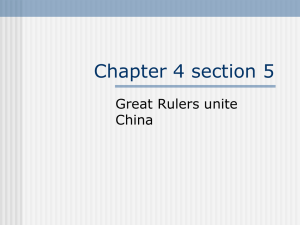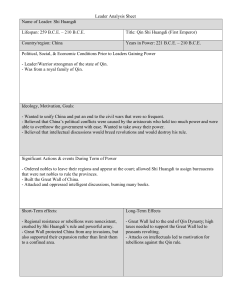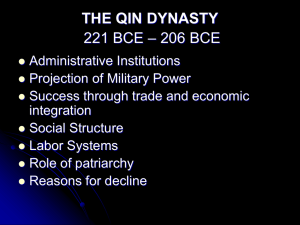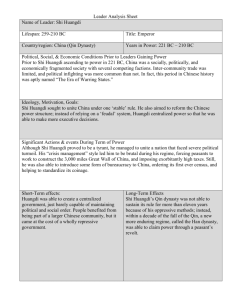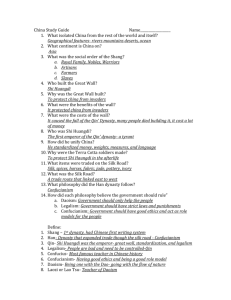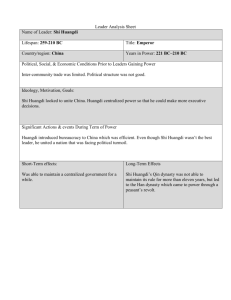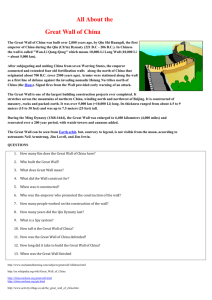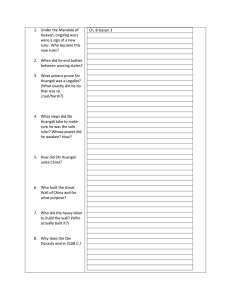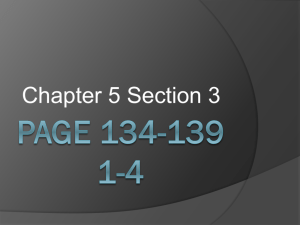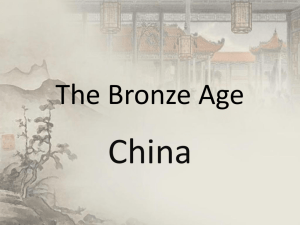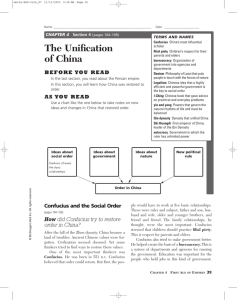the qin dynasty - Cherry Creek Academy
advertisement
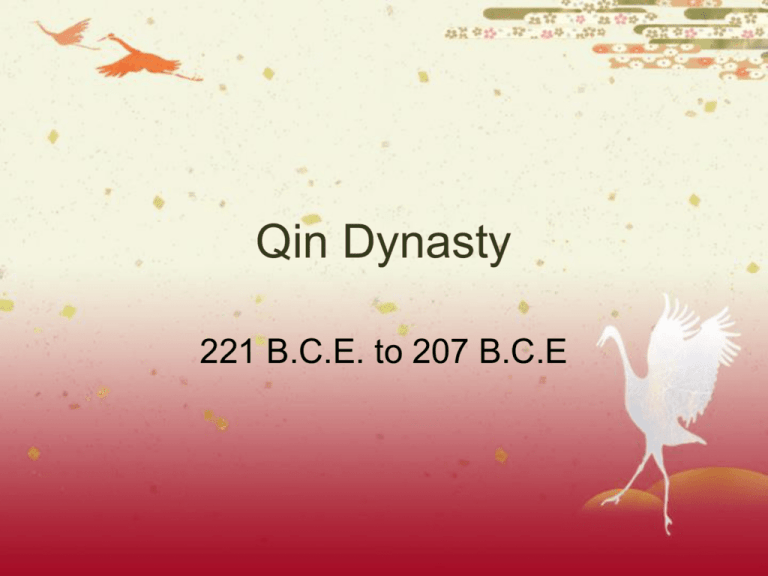
Qin Dynasty 221 B.C.E. to 207 B.C.E The Qin Qin rulers built a strong kingdom with an efficient government in central Asia King Zheng wanted more In 221 B.C.E. Qin forces brought down the last of their enemies China is united for the first time since the warring period began Customs varied from place to place The First Emperor Shi Huangdi= First Emperor Huangdi comes from the gods and legendary rulers of China’s past China under the Qin dynasty, 221-207 B.C.E. Defending the Empire Centralized Government Abolishes old “feudal states” and divides China into 36 military districts, each ruled by appointed officials. Use of inspectors (spies) to keep local officials in check. Shi Huangdi forces all “noble families” to live in the capital in Xianyang. Nobles land was divided up amongst the peasants who had to pay very high taxes. LEGALISM Shi Huangdi adopts Legalism as his primary ruling philosophy A strong leader and strong legal system Believed people must be forced to be good Strict legal code Censored ideas that were dangerous Burned books that did not support his ideas Did not agree with Confucianism Achievements The Great Wall of China Single written language Standardized transportation Centralization of government Standard laws Standard currency Terracotta soldiers The Great Wall of China TERRA COTTA SOLDIERS Hierarchical “social structures” The Emperor Landlords (ruled over the 36 military districts) Merchants Peasants Patriarchal Rule Family roles similar to those found in other early civilizations. Emphasis on unity and the power of the husband and father. Women had clearly defined roles. Generally were subordinate. Women could and did exercise influence behind the scenes.
